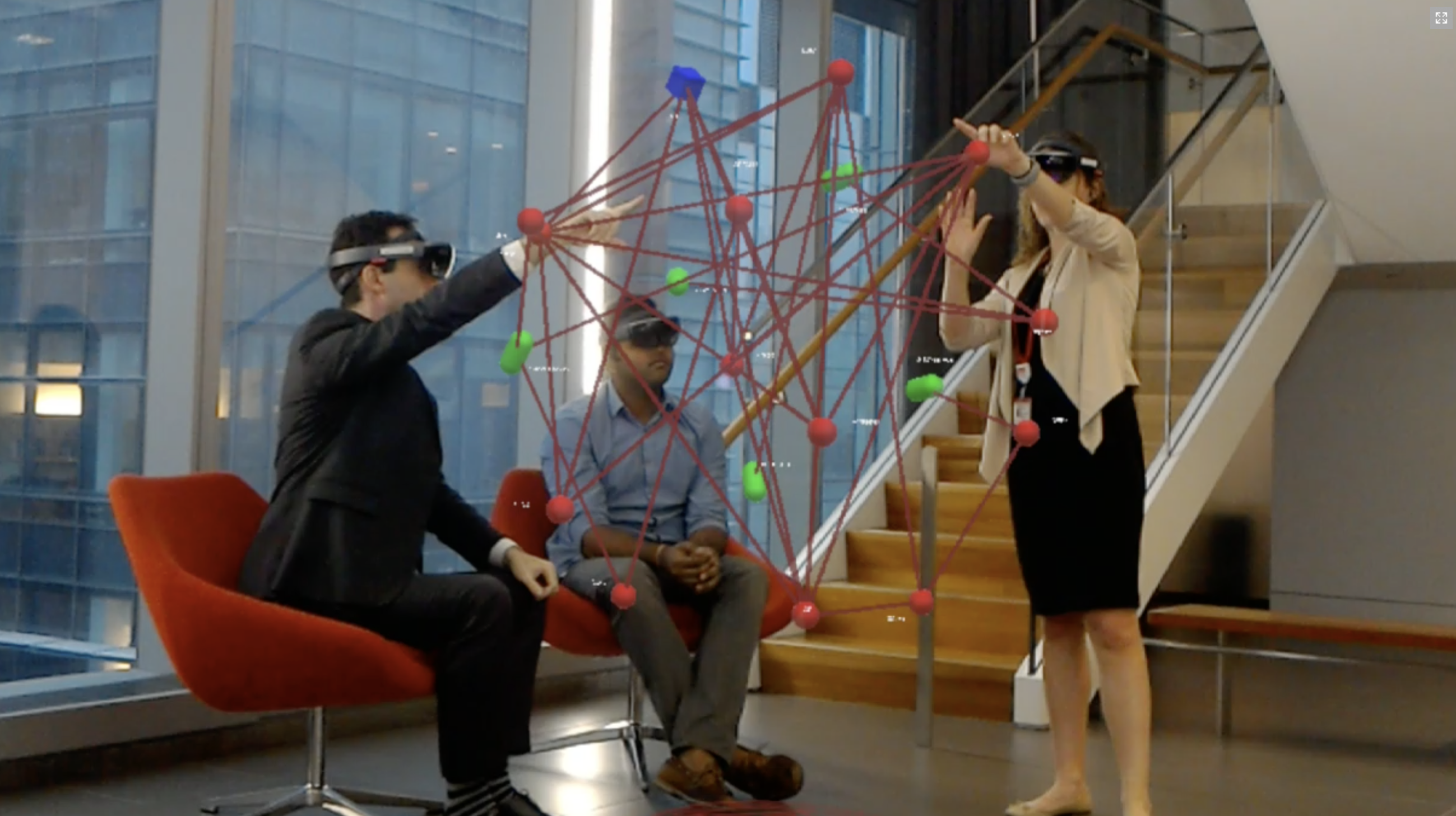
Researchers at the Englander Institute for Precision Medicine (EIPM) bring together basic science, medicine, DNA sequencing and big data to deliver the next generation of precision medicine; the most promising approach to tackle diseases that have thus far eluded effective treatments like cancer, neurodegenerative diseases, and rare genetic conditions.
This process is very data-intensive involving integrating terabytes of information generated from genomic sequencing, heart rate, past clinical information, etc. To this end, EIPM team developed Holo Graph, a HoloLens application that enables clinicians and researchers to visualize cancer drug networks in 3D, manipulate the structure and brainstorm with colleagues in real-time. This enables a new level of collaboration and analysis of data, not possible on a flat 2D screen. Recently this app was published to the Microsoft Store.
Dr. Olivier Elemento, the Director of Caryl and Israel Englander Institute for Precision Medicine at Weill Cornell, explains the importance of Holo Graph:
“Precision medicine is at the crossroad between big data and medicine where massive amounts of medical data are processed and analyzed in pursuit of tailored treatment options. Optimizing data visualization tools like Holo Graph is of paramount importance to this pursuit as it brings data into the real world allowing our clinicians and researchers to fully immerse, collaborate and brainstorm in an unprecedented way towards a tailored treatment.”
In this post, we will focus on the Voronoi selection feature and how we developed it to allow EIPM to improve the node selection experience and make it intuitive for any physician to use. The final code was built using Unity and C# is open-sourced and can be used in any 3D application. Voronoi selection takes an array of 2D coordinates as an input and creates a grid/layout around the points in such a way that the edges are drawn where the distance to the two nearest points is the same. Our open-sourced code is the same code used in the Holo Graph application. Our Voronoi selection feature greatly improved the user experience and enabled any user, including those trying the app for the first time, to intuitively select nodes and interact with them. Selection problems were a major issue before our engagement, as the hit target was only around the nodes and it was very difficult to select using your gaze.
“Working together with Microsoft enabled us to tailor Holo Graph’s performance and responsiveness to HoloLens and bring the overall experience to a whole new level. Feedback from clinicians and researchers shows great promise and we plan to leverage Voronoi selection in all our upcoming mixed reality projects.”
The code is specific to Unity and C# but it can be ported to any platform or language following the steps explained in the “Taking Voronoi to the third dimension” section. It will greatly improve the user experience in any data visualization scenario, in particular when there are multiple small objects that are hard to select.
This is an excerpt, original article appears here.
